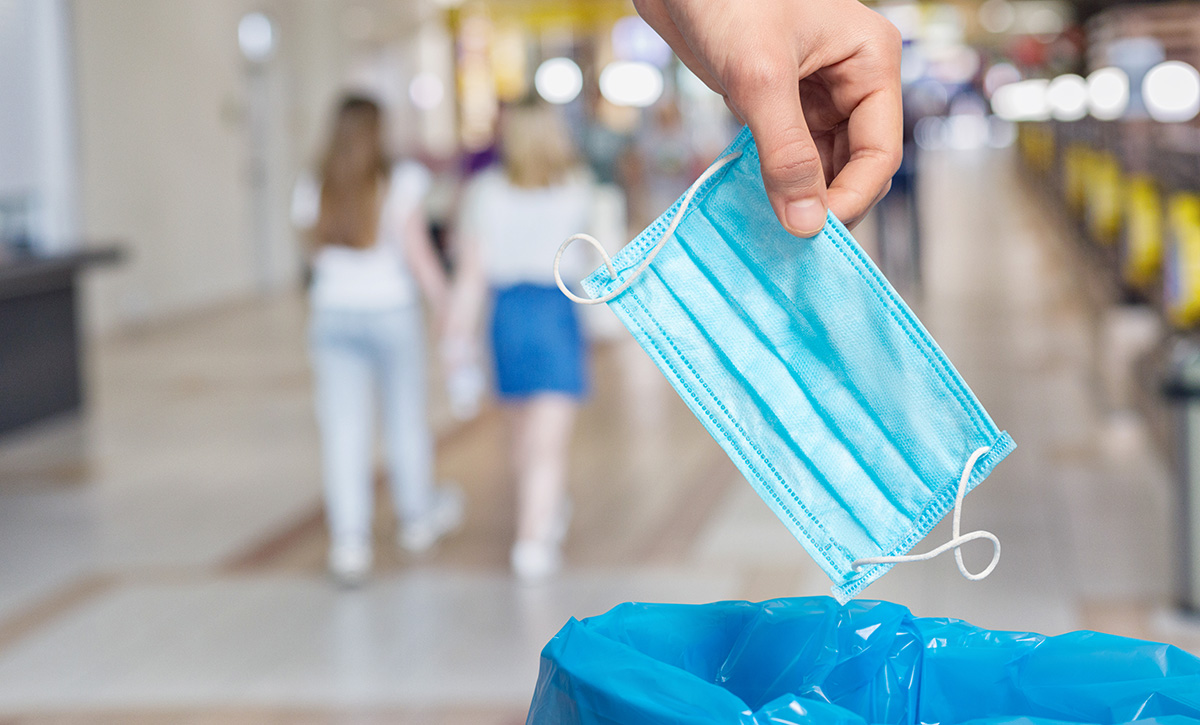‘Treat This As You Would Any Illness’: Schools Across U.S. Downgrade COVID Rules
Doing away with masking & testing rules, many districts are telling students to stay home if they’re sick, but otherwise to come to class.

As students return to classrooms from summer break, school systems nationwide continue to scale back COVID masking and quarantine requirements — in some cases nearly resembling pre-pandemic sickness protocols.
“Please treat this as you would any illness,” said a document from Hendry County School District in Florida.
The district’s rules specify that staff and students experiencing coronavirus symptoms should stay home, while those who are asymptomatic and fever-free for 24 hours may come to school with or without a face covering.
Across the country, over 95% of the 500 largest school systems had no mask requirement as of Aug. 22, according to an update from Burbio, a data service that tracks school policy. Several, however, do still require students to wear face coverings for three to five days when they return to campus after finishing a five-day quarantine.
Those policies come after the Centers for Disease Control and Prevention in mid-August eased their K-12 COVID guidelines. Rather than recommending anyone exposed to the virus self-isolate, the CDC now calls for only individuals who test positive or experience symptoms to stay home, effectively doing away with the test-to-stay programs many schools used during the previous academic year. The guidelines still recommend universal masking where COVID levels are high, as they are in several regions of the country, including New York City.
Regardless, the nation’s largest district will return to school with face coverings optional after lifting its mandate last March. Los Angeles, the second largest school system, will do the same. New York City will also end its requirement that students and staff undergo randomized asymptomatic testing for the virus.
Breaking the trend, Philadelphia and Prince George’s County, Maryland are enforcing universal masking as students return students to classrooms. Philadelphia’s rule, however, will lift after the first 10 days of school.
Benjamin Linas, a professor of medicine at Boston University, advises schools not to put an outright ban on mask requirements, because the policies can be a helpful temporary tool for staving off outbreaks and preventing missed learning.
“Sometimes schools have to close because they have so much COVID that kids aren’t coming [or] there’s not enough staff,” he told The 74. “When we’re talking about school mitigation and school masking, we’re talking about learning.”
Indeed, an Albuquerque, New Mexico, charter school on Aug. 16 shifted online for a week when over 3% of students and staff tested positive for the virus. And Mannsville Schools, a tiny 95-student Oklahoma district, announced a week-long closure starting Aug. 14.
“Due to an increasingly high number of positive covid tests for both students and staff, we are forced to close for this week to allow time for everyone to get better and not continue to spread the virus,” wrote Mannsville Superintendent Brandi Price-Kelty. “We will make up these days with virtual learning days after Labor Day.”
Other areas have set a higher threshold at which school COVID positivity levels trigger policy changes: 10% in Kansas City means required masking until levels drop, according to the district, and 20% in South Carolina ushers a brief pivot to remote learning, according to the State Department of Health.
“There might be a situation in which you put on masks for 10 days in order to break an in-class cluster and get back to school,” said Linas. “I think people could have more in-person learning and more educational opportunities if we acknowledge sometimes you have to put on a mask in response to an outbreak situation in your own building.”
Thanks to vaccines, COVID hospitalizations and death rates are much lower than they were at the height of the pandemic. But because case rates continue to follow patterns of surges and troughs, infections will still be an issue classrooms must deal with for the foreseeable future, he said.
“This disease is not yet a common cold, it still does major damage… there’s still a lot of morbidity. [Masking in classrooms when cases spike] is the least invasive policy one could have other than just doing nothing. And I think it would be foolish to do nothing at this point.”
Get stories like these delivered straight to your inbox. Sign up for The 74 Newsletter

;)
